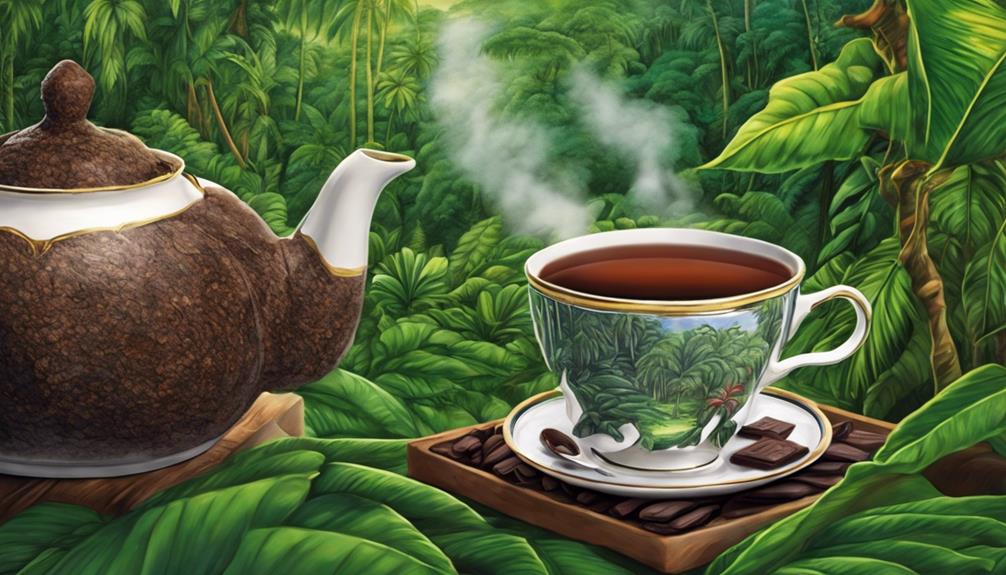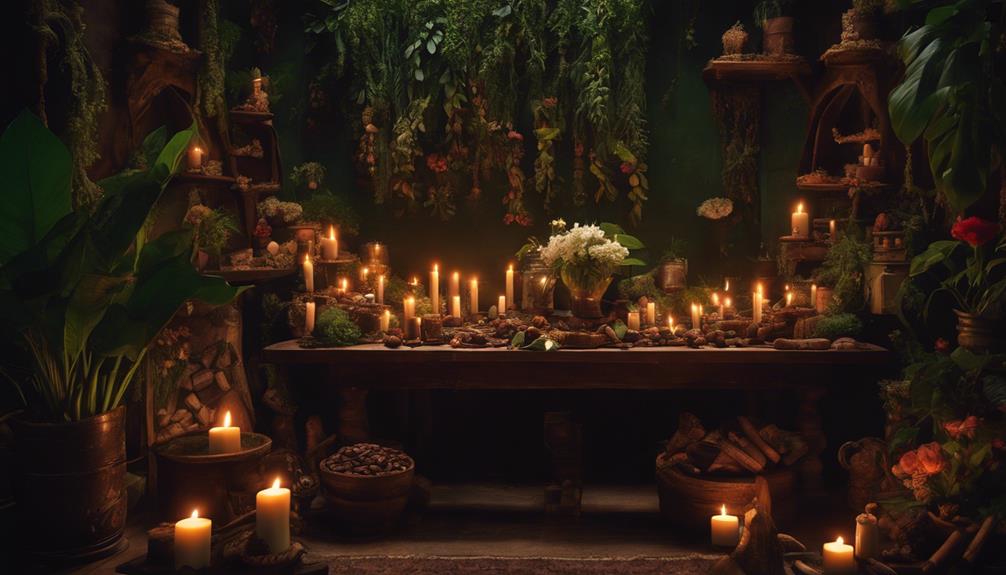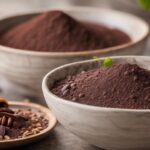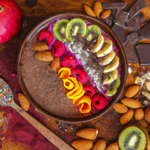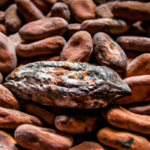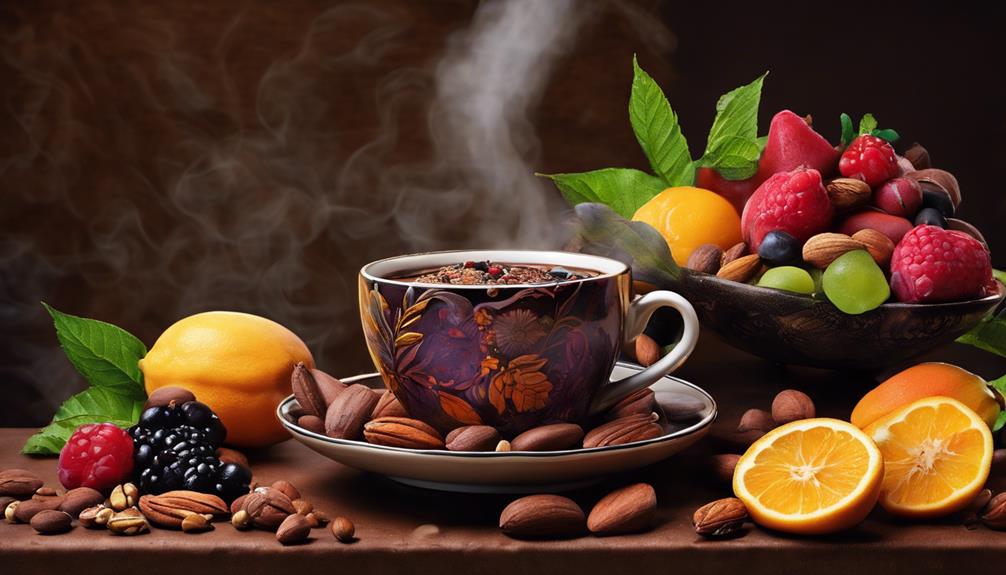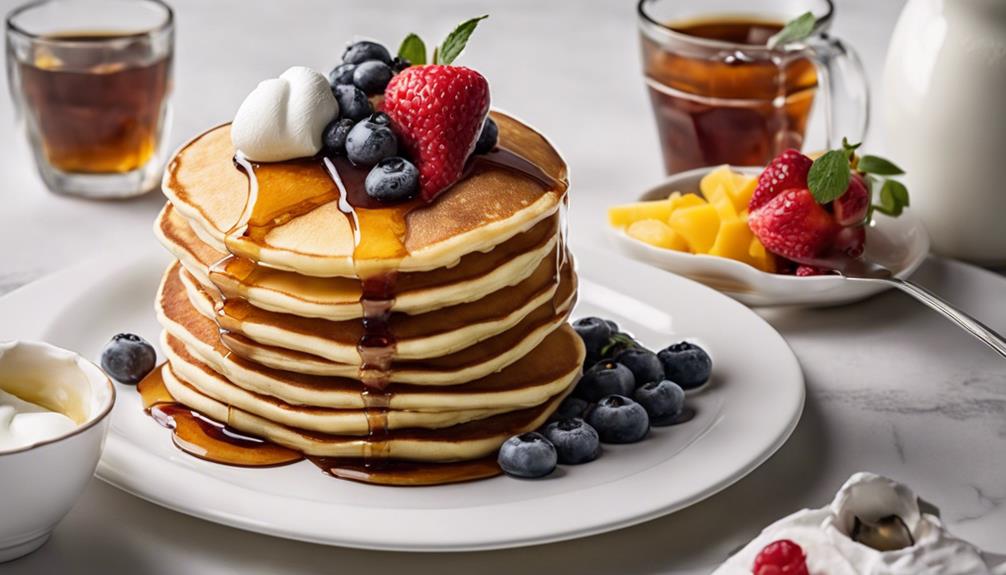Cacao tea offers a variety of health benefits. It is rich in antioxidants that combat free radicals, which helps maintain healthy cell function and enhance the immune system. The tea is beneficial for heart health by reducing blood pressure and lowering the risk of cardiovascular problems. It also aids in reducing inflammation in the body, boosts natural energy with theobromine, and contributes to overall well-being. Discover the many advantages that cacao tea can provide for your health!
Key Takeaways
- Impressive antioxidant-rich properties fight free radicals for healthy cell function.
- Significant heart health benefits include lowered blood pressure and improved circulation.
- Boosts immunity with antioxidants and vitamins for overall health and well-being.
- Reduces inflammation in the body with flavonoids and anti-inflammatory properties.
- Provides sustained natural energy from theobromine, improving alertness and metabolism.
Antioxidant-Rich Properties of Cacao Tea
Indisputably, cacao tea stands out for its impressive antioxidant-rich properties. When we talk about antioxidants, we're referring to compounds in cacao tea that help fight off harmful molecules called free radicals in our bodies. These antioxidants play a vital role in promoting healthy cell function, supporting our immune system, maintaining skin health, and even slowing down the aging process.
Did you know that the antioxidants found in cacao tea are even more abundant than those in blueberries? It's true! By consuming cacao tea daily, you can give your body a significant boost of these beneficial antioxidants. Not only do they help protect your cells from damage, but they also contribute to overall health and well-being.
Heart Health Benefits of Cacao Tea

Cacao tea offers significant benefits for heart health, attributed to its rich antioxidant content. The antioxidants present in cacao tea play an important role in lowering blood pressure, which is essential for promoting a healthy heart. By regularly consuming cacao tea, you can help improve your heart function and circulation, which are crucial for overall cardiovascular well-being.
Additionally, cacao tea is a great source of magnesium, a mineral that supports the proper functioning of the heart muscles. This delicious beverage can also assist in reducing the risk of cardiovascular issues, making it a valuable addition to your daily routine. Including cacao tea in your diet can help improve your heart health and lower the risk of heart-related complications, providing you with a tasty way to care for your cardiovascular system.
Immunity-Boosting Effects of Cacao Tea
Boosting immunity, cacao tea's rich antioxidant content enhances the body's defenses against illnesses and supports overall health. Here are three ways cacao tea can help strengthen your immune system:
- Antioxidant Power: The antioxidants found in cacao tea, such as flavonoids, work to boost your immune system by protecting your cells from damage. By fighting off harmful free radicals, these antioxidants support your body's natural defense mechanisms.
- Vitamin Support: Cacao tea contains essential vitamins like C and E, which are known for their role in enhancing immune function. These vitamins aid in maintaining a robust immune system, helping you stay healthy and ward off infections.
- Theobromine Benefits: The presence of theobromine in cacao tea not only contributes to its rich flavor but also plays a part in improving overall health and immunity. This compound works in conjunction with other elements in cacao tea to fortify your body's defenses, keeping you strong and healthy.
Incorporating cacao tea into your routine can provide a delicious way to boost your immunity and promote overall well-being.
Inflammation Reduction With Cacao Tea
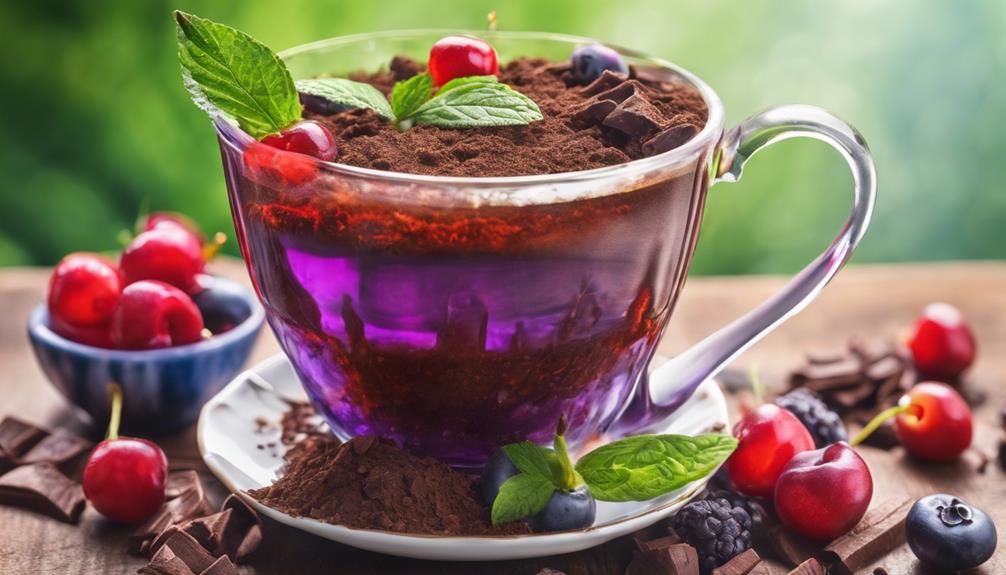
Reducing inflammation is a vital benefit associated with incorporating cacao tea into my daily routine.
Cacao tea contains flavonoids that work to reduce inflammation in my body, helping combat oxidative stress and lower levels of inflammation markers.
The antioxidants present in cacao tea play an essential role in fighting inflammation-related issues.
By including cacao tea in my diet, I can harness its anti-inflammatory properties to support my overall health.
Regular consumption of cacao tea may contribute to reducing inflammation and promoting well-being.
This natural remedy offers a delicious way to improve health and wellness by addressing inflammation, making it a valuable addition to my daily routine.
Natural Energy Boost From Cacao Tea
My daily routine benefits from the sustained and long-lasting natural energy boost that cacao tea provides, thanks to the stimulating compound theobromine. This essential source of energy helps improve alertness and focus, supporting a healthy and active lifestyle. Here are three ways cacao tea enhances energy levels:
- Steady Energy: Unlike coffee, cacao tea offers a consistent energy level without the jittery side effects often associated with caffeine, making it an ideal choice for maintaining focus throughout the day.
- Metabolism Boost: The theobromine in cacao tea aids in boosting metabolism, helping regulate energy use and potentially supporting weight management goals. By promoting calorie burning, cacao tea can assist in breaking down fat cells for a healthier lifestyle.
- Sustained Vitality: The natural energy provided by cacao tea is long-lasting, ensuring that you remain energized and alert for extended periods, making it a great addition to your daily routine for improved productivity and overall well-being.
Frequently Asked Questions
Is It OK to Drink Cacao Every Day?
It's okay to drink cacao every day. I enjoy it for its rich taste and health benefits. Moderation is key, but savoring a cup daily can be a delightful way to bring antioxidants and joy into my routine.
Does Cacao Tea Help You Sleep?
Like a gentle lullaby, cacao tea soothes my mind and eases me into restful slumber. Its delicate flavors and calming properties help me unwind, making each sip a cherished part of my bedtime routine.
What Does Cacao Do to Your Body?
Cacao provides numerous benefits to my body. It boosts heart health, offers essential nutrients like magnesium and zinc, and aids in bone health. The antioxidants in cacao tea improve immune function and lower blood pressure.
Does Cacao Tea Have Caffeine in It?
Yes, cacao tea does have caffeine in it, but in the form of theobromine. It provides a gentle energy boost without the typical caffeine jitters or crashes. It's a great option for those looking to reduce their caffeine intake.
Can Cacao Tea be a Substitute for Coffee in Australian Coffee Culture?
In recent years, there has been a significant rise in Australian coffee culture, with more people seeking alternatives to traditional coffee. Can cacao tea be a substitute for coffee in the Australian coffee culture rise? With its rich flavor and potential health benefits, cacao tea could become a popular choice for those looking to switch things up.
Conclusion
To sum up, cacao tea provides a wide array of health benefits, including antioxidants, assistance for heart health, immunity enhancement, reduction of inflammation, and a natural energy lift. Adding cacao tea to your daily regimen can enhance your general health.
So, the next time you seek a cozy and soothing drink, think about opting for a cup of cacao tea for a delightful and nourishing boost!

